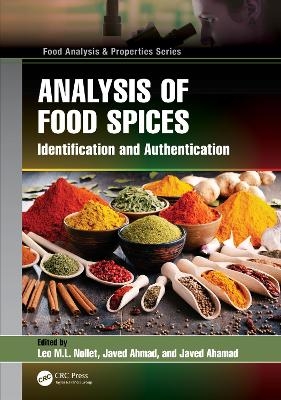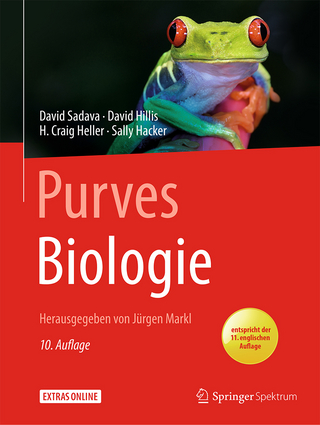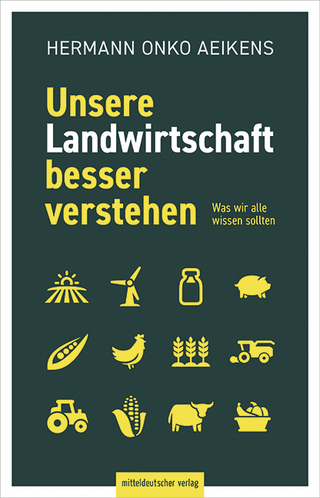
Analysis of Food Spices
CRC Press (Verlag)
978-1-032-24684-0 (ISBN)
Spices are obtained from natural sources, especially from plants, and are used in cooking food in whole or grounded forms mainly for imparting flavor, aroma, and piquancy. Besides their role in improving food quality, spices also have health benefits that are anticancer, antidiabetic, antimicrobial, antioxidant, hypolipidemic, analgesic, immunostimulant, and more.
Spices are generally marketed in powder form, and their supply chain is very long and complicated, which is why they are particularly susceptible to adulteration at many points. The spice supply chain is considered to be moderately vulnerable and has an ineffective quality detection system in its final product, which is the main risk factor. There are many types of fraud nowadays related to spices such as adulteration, falsification, substitution, and inaccurate labeling.
Analysis of Food Spices: Identification and Authentication provides an overview of spices of different categories, such as terpenes and terpenoids, oleoresins, alkaloids, and polyphenolics and flavonoids, as well as qualitative and quantitative guidelines for ensuring their quality and safety using modern analytical tools and techniques. The first section of the book discusses the overview, sources, and health benefits of important categories of spices such as terpenes and terpenoids (cardamom, cinnamon, clove, coriander, cumin, fennel), oleoresins (capsicum, ginger, nutmeg), alkaloids (black pepper, fenugreek), and polyphenolics and flavonoids (basil, turmeric, olive, saffron). In the second section, qualitative diagnostic features of spices are covered. In the third section, the roles of quantitative analytical techniques, such as HPLC, LC-MS, HPTLC, GC, and GC-MS, capillary electrophoresis (CE), and other recent techniques in the analysis of food spices, are also discussed. Each chapter concludes with a general reference section, which is a bibliographic guide to more advanced texts.
Key Features
Provides a detailed overview of different food spices of plant origin, and discusses their health benefits and uses of different analytical techniques in its quality control
Explains how qualitative diagnostic features of food spices are utilized as quality control tools
Describes applicability of analytical techniques like HPLC, LC-MS, GC-MS, HPTLC, and CE for quality control of food spices
Emphasizes use of recent techniques such as proteomics, biosensors, and more in the analysis/quality control of food spices
This book will provide important guidelines for controlling quality, safety, and efficacy issues related to food spices.
Leo M. L. Nollet earned an MS (1973) and PhD (1978) in biology from the Katholieke Universiteit Leuven, Belgium. He is an editor and associate editor of numerous books. He edited for M. Dekker, New York—now CRC Press of Taylor & Francis Publishing Group—the first, second, and third editions of Food Analysis by HPLC and Handbook of Food Analysis. Dr. Javed Ahmad (ORCID iD: 0000-0002-7025-751X) is an assistant professor at the Department of Pharmaceutics, College of Pharmacy, Najran University, Saudi Arabia. He received his doctorate degree in pharmaceutical sciences (Pharmaceutics) from the School of Pharmaceutical Education and Research, Jamia Hamdard, New Delhi, India. His current research interest lies in formulation design and characterization of pharmaceuticals/nutraceuticals/cosmeceuticals to improve efficacy and performance. Dr. Javed Ahamad is Assistant Professor Pharmacognosy at the Faculty of Pharmacy, Tishk International University, Erbil, Iraq. He earned his M.Sc. in 2009 and his Ph.D. (Pharmacognosy and Phytochemistry) in 2015 at Jamia Hamdard University, New Dehli, India. His research interests are study of phytomedicine and its role in healthcare; isolation and characterization of natural products by modern analytical tools like UV, FTIR, NMR and Mass spectroscopy; development and validation of analytical methods (HPLC/HPTLC); characterization of volatile oils by GC and GC-MS; standardization of Herbal formulations and plant drugs and pharmacological screening of natural products.
1. Food Spices: An Overview 2. Terpenes and terpenoids containing food spices 3. Oleoresins containing Food spices 4. Alkaloids Containing Food Spices 5. Polyphenols and Flavonoids Containing Food Spices 6. Qualitative diagnostic features of terpenes and terpenoids containing food spices 7. Qualitative diagnostic features of oleoresins containing food spices 8. Qualitative diagnostic features of Alkaloidal spices 9. Qualitative diagnostic features of polyphenols and flavonoids containing food spices 10. HPLC analysis of food spices 11. LC-MS and LC-MS/MS analysis of food spices 12. GC and GC-MS analysis of food spices 13. HPTLC Analysis of Food Spices 14. Capillary Electrophoresis 15. The Application of NMR Spectroscopy and Chemometrics in Authentication of Spices 16. Non-destructive Testing Methods of Spices
| Erscheinungsdatum | 21.04.2024 |
|---|---|
| Reihe/Serie | Food Analysis & Properties |
| Zusatzinfo | 51 Tables, black and white; 2 Line drawings, color; 15 Line drawings, black and white; 26 Halftones, black and white; 2 Illustrations, color; 41 Illustrations, black and white |
| Verlagsort | London |
| Sprache | englisch |
| Maße | 178 x 254 mm |
| Gewicht | 453 g |
| Themenwelt | Naturwissenschaften ► Biologie |
| Technik ► Lebensmitteltechnologie | |
| ISBN-10 | 1-032-24684-7 / 1032246847 |
| ISBN-13 | 978-1-032-24684-0 / 9781032246840 |
| Zustand | Neuware |
| Haben Sie eine Frage zum Produkt? |
aus dem Bereich


